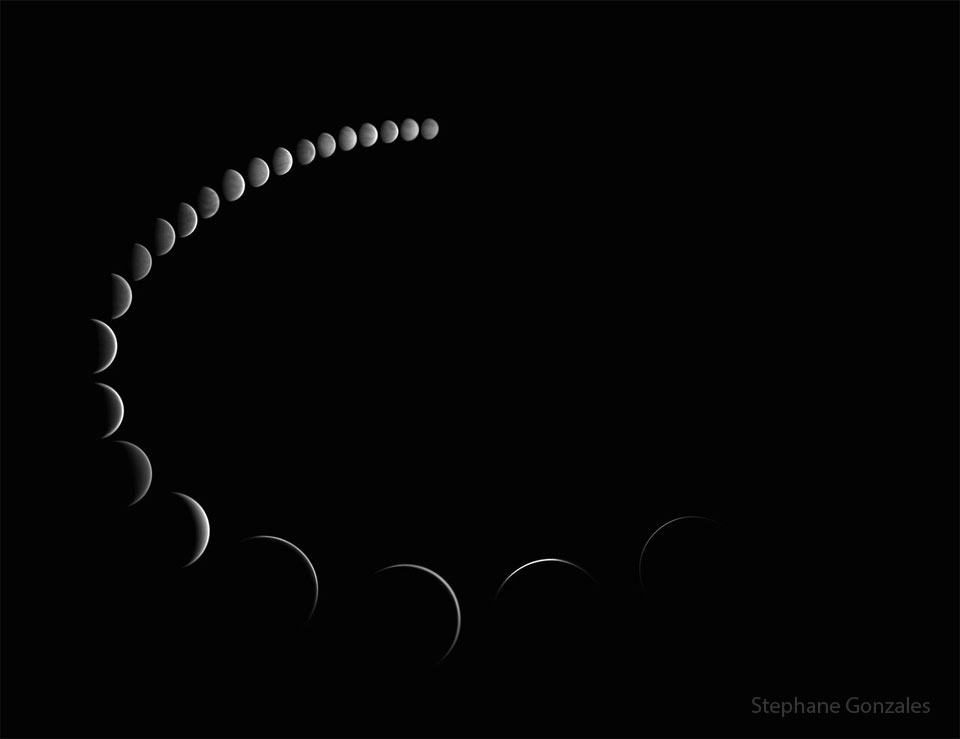안녕하세요, 잡학다식 입니다. 오늘은 과연 나사에서 어떤 방식으로 우주의 형상을 표현해 줄까요?
우선 이미지부터 볼 수 있도록 하겠습니다

해당 사진의 이름은 The Phases of Venus 인데요 우선 NASA에서 공식적으로 발표한 설명들을 확인해 보겠습니다
Venus goes through phases. Just like our Moon, Venus can appear as a full circular disk, a thin crescent, or anything in between. Venus, frequently the brightest object in the post-sunset or pre-sunrise sky, appears so small, however, that it usually requires binoculars or a small telescope to clearly see its current phase. The featured time-lapse sequence was taken over the course of six months in 2015 from Surgères, Charente-Maritime, France, and shows not only how Venus changes phase, but changes angular size as well. When Venus is on the far side of the Sun from the Earth, it appears angularly smallest and nearest to full phase, while when Venus and Earth are on the same side of the Sun, Venus appears larger, but as a crescent. This month Venus rises before dawn in waxing gibbous phases. Free APOD Lecture: January 9, 2024 to the Amateur Astronomers of Association of New York
이번에도 광활한 우주 앞에 인간이 얼마나 작은 존재인지 다시 한번 알게 되는것 같습니다
저는 내일도 더 좋은 사진과 함께 돌아오겠습니다, 그럼 행목한 하루 되시길 바랍니다
'과학상식' 카테고리의 다른 글
| NASA 나사의 오늘의 이미지들 (2024-01-10) (0) | 2024.01.11 |
|---|---|
| NASA 나사의 오늘의 이미지들 (2024-01-09) (0) | 2024.01.10 |
| NASA 나사의 오늘의 이미지들 (2024-01-07) (0) | 2024.01.08 |
| NASA 나사의 오늘의 이미지들 (2024-01-06) (1) | 2024.01.07 |
| NASA 나사의 오늘의 이미지들 (2024-01-05) (0) | 2024.01.06 |